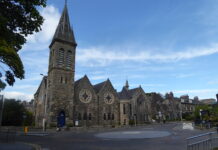Phoenix, the vibrant heart of Arizona and the fifth-largest city in the United States, has historically been a beacon of growth and expansion in the American Southwest. Known for its sprawling suburbs, booming economy, and warm climate, Phoenix has attracted residents from across the country and around the world. However, recent trends indicate a shift, with the once soaring phoenix population now showing signs of decline. This article delves into the factors contributing to this downturn and the implications it holds for the future of the city.
Understanding Phoenix’s Population Trends
Phoenix has long been celebrated for its rapid population growth, becoming a symbol of the thriving Sun Belt. The city’s population density has expanded, with new developments stretching out into the desert. However, the latest census data and demographic studies point towards a concerning trend: the growth rate is slowing, and in some areas, the population is decreasing.
The Numbers Behind the Decline
The population of Phoenix has seen remarkable growth over the past decades. But, recent statistics show that the rate of this growth is not what it used to be. After peaking in the early 2000s, the rate at which people are moving to Phoenix has dwindled. The reasons behind this change are multifaceted, ranging from economic shifts to quality of life considerations.
Comparing Population Density Phoenix-wide
While the overall population of Phoenix remains high, the density of the population across the city is uneven. Some neighborhoods are experiencing a densification process, with new high-rise developments and an influx of residents. In contrast, other areas, especially those on the fringes of the metropolitan area, have seen population densities plateau or even decline.
Factors Contributing to the Decline
There is no single cause for the decline in Phoenix’s population growth. Instead, it is the result of various factors that interplay, affecting the desirability and feasibility of living in Phoenix.
Economic Shifts
The economy plays a significant role in population trends. Phoenix’s economy has traditionally been driven by real estate, construction, and tourism. However, economic downturns and a volatile housing market have made Phoenix less attractive for new residents and businesses, impacting job opportunities and ultimately influencing population figures.
Climate Change and Environmental Concerns
Phoenix is located in a desert climate, which comes with extreme temperatures and limited water resources. Climate change has exacerbated these conditions, leading to hotter summers and more frequent droughts. Environmental concerns, such as air quality and water scarcity, have become increasingly important to residents and potential migrants, affecting their decision to stay or move to Phoenix.
Cost of Living and Affordability
Although Phoenix has historically been a more affordable alternative to coastal cities, the cost of living has been on the rise. Housing prices have increased, and although they are still lower than places like Los Angeles or New York, the affordability gap is closing. This has made Phoenix less attractive to those looking for affordable living options.
Impacts of the Population Decline
The decline in population growth can have significant impacts on a city like Phoenix. The consequences are felt across various sectors, from the economy to the social fabric of the community.
Economic Implications
A shrinking or stagnating population can lead to a reduced labor force, which in turn can impact local businesses and the overall economy. Fewer residents can also mean decreased consumer spending, affecting the prosperity of retail and service sectors.
Infrastructure and Urban Planning
Population decline can lead to challenges in urban planning and infrastructure. Investments in public transportation, roads, and utilities may no longer align with the needs of the population. Additionally, an excess of housing and commercial space can lead to blight and a decrease in property values.
Social and Community Effects
A declining population can affect the vibrancy and dynamics of community life. Schools may face lower enrollment, leading to closures or consolidations. Public services such as libraries, parks, and recreational programs may see reduced usage and funding.
Phoenix Population Growth: Looking Ahead
Despite the current trends, the future of Phoenix’s population is not set in stone. There are pathways to revitalizing the city’s growth and maintaining its status as a desirable place to live and work.
Initiatives to Attract and Retain Residents
City planners and policymakers are exploring ways to attract new residents and retain existing ones. These initiatives may include investing in sustainable infrastructure, promoting affordable housing, and enhancing the quality of life through the arts, culture, and recreational opportunities.
The Role of Innovation and Technology
Innovation and technology have the potential to transform Phoenix’s economic landscape. By fostering a startup culture and supporting tech industries, Phoenix can create new job opportunities that attract a younger, tech-savvy population.
Sustainable Development and Climate Resilience
To address environmental concerns and ensure a livable future, Phoenix must prioritize sustainable development and climate resilience. This includes water conservation efforts, renewable energy projects, and urban designs that reduce heat absorption.
Conclusion: The Path Forward for Phoenix
Phoenix stands at a crossroads, with its population trends signaling the need for reflection and action. The decline in population growth offers both challenges and opportunities for the city to redefine itself and adapt to the changing needs and desires of its residents.
By addressing the factors contributing to the decline and embracing innovative solutions, Phoenix can once again rise and continue its legacy as a thriving metropolis in the American Southwest.
The path forward will require collaboration, creativity, and a commitment to building a sustainable and inclusive city that can weather the challenges of the 21st century. The decline of the Phoenix population is not just a statistic; it’s a call to action—a chance to reimagine and reshape the future of one of America’s great cities.
For more information, visit ApzoMedia






































































